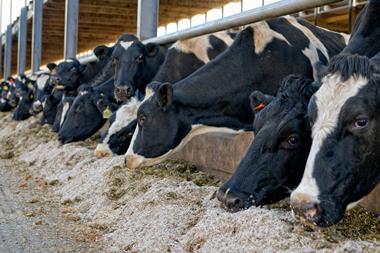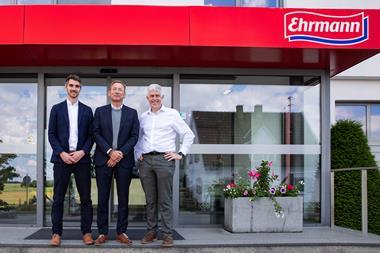Organics: pure but not so simple
The UK organic milk pool is falling short of demand, while in England output is booming says Peter Crosskey
The popularity of milk products is growing rapidly within the booming organic sector which dairy processor Arla estimates to be worth £840m by 2003. Key drivers in the market are parents who want to provide the best possible start in life for their children more than 20% of sales of baby foods, many of them milk based, are now organic.
But the UK organic milk pool for all dairy production is still a long way short of providing what retailers believe they can sell. Sainsbury alone is anxious to be able to source organic dairy products equivalent to 100m litres a year of milk by 2003 and it is unlikely to find it all here.
Last year the UK organic milk pool was just 40m litres, by April 1 this year it was 60m litres and may top 100m litres by 2001. But while growing rapidly, these volumes cannot supply both a liquid milk market and the burgeoning demand from cheesemakers and other manufacturers. The liquid milk market alone currently accounts for a third of all organic milk sales.
"North Downs Dairy organic volumes have seen a year on year increase of 100%," says md David Hardisty, whose range of organic cheddars and territorials make Pilgrims Choice the biggest brand in the organic cheese sector.
While the premium for organic lines is determined as much by retailer policy as by the economics of supply and demand, across the dairy fixture the organic label typically adds be-tween 20% and 50% to the price. That compares with production costs for organic raw milk running at 50% more than those for conventional systems.
Neil Kenyon, md of Garstang, Lancashire's Dew-Lay Products which has just started making a range of organic cheeses entirely from British organic milk, says with organic milk costing at least 12ppl more to produce, it's a costly venture for any producer to consider. Coupled with the comparatively meagre support from government for organic conversion, it's anybody's guess as to how far the industry will develop.
The Danish experience may hold some salutary lessons. With 7.5% of the country's 4.5 billion litre output in organic production, domestic demand has been met, leaving surpluses for export. Rather than develop their export market further, the Danes carried out a consumer promotion targeting organic drinking milk. The TV campaign which has just drawn to a close produced a 3% lift in sales.
Talk of surpluses, though, had been enough to deter more Danish farmers from converting to organics at least until the market tightens. Given that the Danes are about five years ahead of the UK in organic production, a similar scenario could eventually emerge here.
Of all the European producers, the country to watch, though, is Germany, by far the largest producer of organics and now forging ahead with exports.
With the highest per capita consumption of organic food and drink in Europe, the German dairy industry is faced with demanding consumers who want strict standards of quality and plenty of innovation. "The rate of growth in organic milk production is set to be explosive in the next few years," says Kurt Bettin, CMA (UK) director.
German output of organic cheese is increasing by 10% year on year, liquid milk by 13%,and yogurt by 19%. "The German dairy industry has a future offering the sophisticated UK consumer premium organic dairy products," promises Bettin.
There is no doubt that organic units are becoming hot property. Following its acquisition last year of Rachel's Dairy in Aberystwyth, US-based Horizon Organic Dairy went on to buy Devon-based Meadow Farms, the supermarket own-label organic liquid milk supplier at the beginning of June.
"Our intention is to strengthen the organic market by working in partnership with dairy farmers to increase supplies and develop more organic dairy products," says md Peter Deacon.
{{FOCUS SPECIALS }}
Close menu
- Home
- Buying & Supplying
- Stores
- Channels
- Finance
- People
- Reports
- Events
- Jobs
- Subscribe now
The Grocer focus on the dairymen: organics
2000-07-01T00:00:00+01:00
Sign in to comment on this article
Not logged in before? Register for FREE guest access today.
You will be able to:
- Read more stories
- Receive daily newsletters
- Comment on stories
Advert







No comments yet